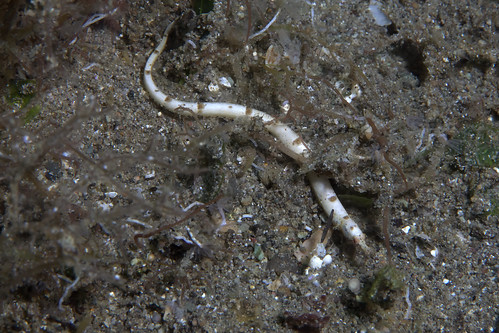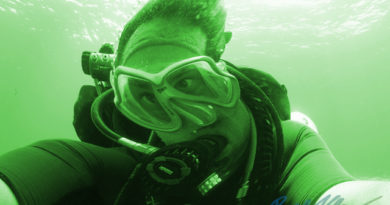Anilao Fishes
In my last post I was raving about the incredibly diverse nudibranch fauna in Anilao. I like sea slugs, but my main interest is fish diversity! And in this realm Aniao is very very impressive as well. What did I see in my first 2 weeks at Aiyanar?
Let me take a big step back and explain how I can even start to talk about the fish fauna of such a rich and diverse place after only two weeks! It would take years to realllly get to know such a complex fish fauna well. But, I had a lot of very fish save locals (especially the Aiyanar dive guides Bhok and Kim) to talk to. Plus, I think I can say that without false modesty, I have a pretty good eye for fishes. So what swam in front of this eye and the lens of my camera?
PIPEFISH
Just like the crabs and nudibranchs, the fishes of Anilao are typically small, rare and unusual. Such as the pipefishes: seahorse relatives which often look more like worms than like fishes. I have seen several species of pipefishes here, among them this individual of Halicampus sp.
This fish is not even in the otherwise very complete
LION & SCORPIONFISH
The muck diving sites in Anilao are full of different members of the scorpaenifromes, the lion, stone & scorpionfishes. Besides the common lionfish, Pterois volitans, I have observed several dwarf lionfishes. This is a head-on shot of a Parapterois heturura:
STARGAZER
I am always excited to see a stargazer. This is an ambush predator hiding in the sand. It has such a grumpy face! Of course the face of the fish is not meant to express any human emotions, but for us humans it’s very hard to avoid interpreting eyes and mouths as signals of mood.
GOBIES
Everybody who has ever talked to me for more than 20 minutes knows that I really like gobies. I mean, gobies are just very very special to me. And Anilao delivers in the goby-department. A few species I have seen here for the first time, others I saw which I had not spotted in a long time. Such as the pink-eye dwarfgoby (Bryaninops natans), which I will seek out to shoot in the next couple of days. I really enjoyed seeing this Pleurosycia boldinghi, a goby living on sea pens:
There are also really nice shrimp gobies, these gobies associated with a shrimp, sharing a burrow with the crustacean, in return for keeping a watch for predatory fishes:
AND THIS GUY
What a pretty, tiny filefish (Brachaluteres taylori, juvenile). It was hiding in a back coral (black when dried, white when alive), and matching its host so well. Anilao delivers quite a lot of marine animals like that: rare, tiny and very aesthetic.
FISH BEHAVIOR
In the last 2 weeks I have observed some really fascinating fish behavior: At the dive site “secret bay” I saw a hawkfish snatch a glass shrimp out of a black coral; it was a big shrimp, though, and the hawkfish was not able to eat it at once. Thus, a small wrasse tried to steal the meal out of the mouth of the hawkfish; the hawkfish fled to a sponge next door to finish eating.
At “twin rocks”, the backside of one of the rocks is a damselfish breeding ground right now. These sergant majors (Abudefduf vaigiensis) tend to a purple film of eggs on the rock surface and chase off any fish trying to make their babies into a meal. This is one of these things which are a lot of fun to watch if you know what’s going on, but otherwise you’ll only see a few hectic fish racing in circles. As always, the more you know, the more you see.
All this is no less spectacular than lions hunting zebras and cheetahs raising their young, it’s just happening on a smaller scale!
And the titan triggerfish are breeding these days; these are big (~ 50 cm) fish with powerful teeth, so it’s not even a good idea to approach them too closely. In other spots, the titan triggers are feeding by sorting through the coral rubble. I’m hoping to shoot much more of this aktsch in the next week!








